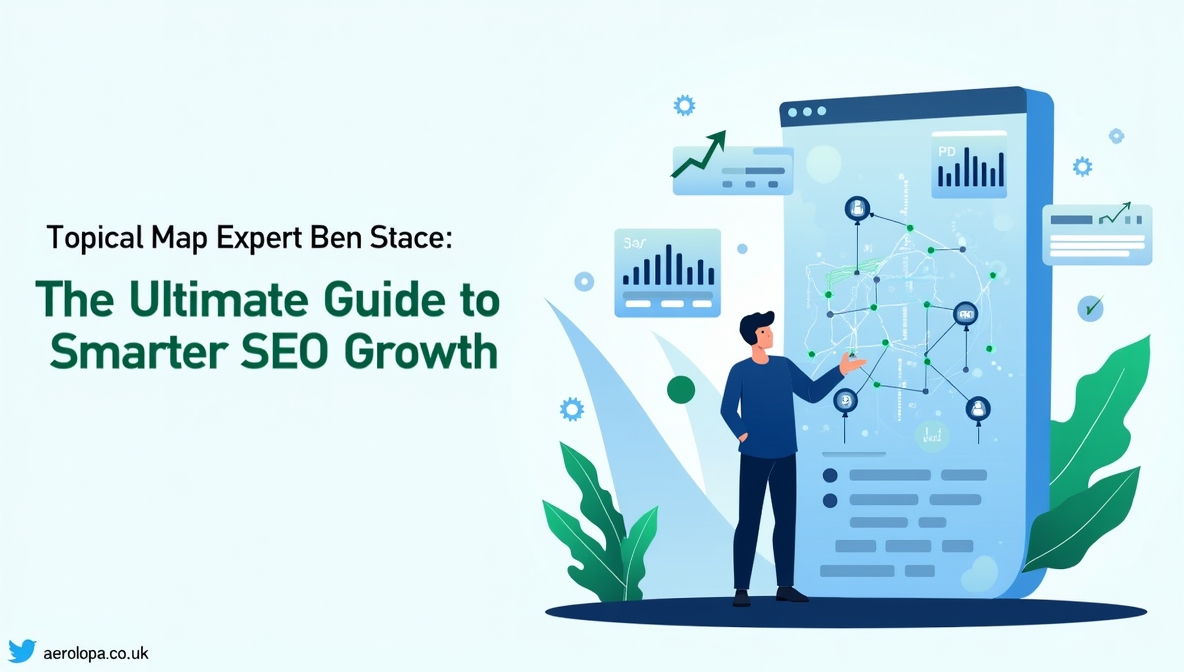Search engines have evolved from simple keyword matching to a level of sophistication in the flexible world of digital marketing that requires them to focus on context, meaning, and user intent. The result of this transition was a process called Semantic SEO, one which opted for depth of relevance instead of repetition.
One of the most influential voices in this space is Ben Stace, whose work has produced a collection of powerful insights. The ben stace semantic seo case studies have become benchmarks for businesses, marketers, and content creators looking to understand how semantic strategies drive real-world results.
This article explores those case studies in detail, uncovering the lessons they hold and how you can apply them to your own business.
Understanding Semantic SEO

Traditional SEO once revolved around placing keywords across a page to capture search traffic. Semantic SEO takes a more advanced approach. Instead of focusing only on keywords, it:
- Understands search intent ( informational, navigational, transactional).
- Uses entities like brands, places and products to create contextual connections.
- Establishs topical authority through clusters of related content.
- Uses structured data to show search engines meaning.
The goal is to create content that search engines trust and users find genuinely helpful. The ben stace semantic seo case studies show how this approach consistently outperforms outdated tactics.
Who Is Ben Stace?
Ben Stace is a digital strategist and content specialist who shares his experiences experimenting with semantic SEO tactics. His case studies involve a Type of entity-driven optimization, topic cluster, and linking techniques to help businesses of all size. The outcomes reveal how these optimization approaches dramatically improve rankings and organic traffic.
For many SEO professionals, the ben stace semantic seo case studies act as blueprints for building sustainable, future-proof strategies.
Important Takeaways from Case Studies on Semantic SEO by Ben Stace
1. Topical Authority Wins Over Keywords
In one case study, Ben showed that publishing isolated keyword-driven posts produced little traction. When the website instead built topic clusters—covering a subject from multiple angles—it began to rank for dozens of related queries.
Takeaway: Create comprehensive content libraries, not scattered blog posts.
2. Entities Strengthen Visibility
Another case highlighted how focusing on entities (brands, people, locations, concepts) improved rankings across related terms. Search engines could gain a better understanding of relevance by linking material to recognized entities.
Takeaway: Incorporate entity-rich content and schema to build semantic connections.
3. Matching Search Intent Drives Conversions
One of the ben stace semantic seo case studies emphasized the importance of aligning with intent. A service-based business achieved stronger results when it optimized for transactional queries (e.g., “hire an SEO consultant”) instead of only generic ones.
Takeaway: Always consider whether users want information, navigation, or a purchase—and deliver accordingly.
4. Internal Linking Builds Context
Ben repeatedly demonstrated the power of internal linking. Connecting related content pieces within a cluster improved topical authority, user engagement, and overall rankings.
Takeaway: Treat internal links as a strategy, not an afterthought.
5. Quality Outperforms Quantity
In another case study, a website reduced over 1,000 thin posts down to just 200 comprehensive resources. The result? Higher rankings, more traffic, and stronger authority.
Takeaway: Focus on depth, accuracy, and user-first value.
Why These Case Studies Matter
The ben stace semantic seo case studies matter because they demonstrate practical outcomes. Instead of theory, they show measurable success:
- Traffic growth: 50–300% in some cases.
- Stronger rankings: Across both long-tail and competitive terms.
- Improved conversions: From intent-focused strategies.
- Brand visibility: Through knowledge panels and featured snippets.
They prove that modern SEO is about creating meaningful connections between topics, users, and search engines.
How Businesses Can Apply These Lessons
You don’t need to reinvent your digital strategy. Here’s how to use insights from the ben stace semantic seo case studies:
- Create topic clusters around your core services or products.
- Use entities in your content to help Google connect your site with recognized concepts.
- Write for intent, not just keywords.
- Audit old content and merge or remove weak posts.
- To build a semantic web, increase the number of internal links on your website.
- Increase the relevancy of search results by utilizing structured data.
The Future of Semantic SEO
The ben stace semantic seo case studies also reflect the future of search. With AI-driven engines, conversational queries, and voice search on the rise, content must focus on meaning, authority, and context. Businesses that adapt now will have a long-term advantage as search continues to evolve.
FAQs About Ben Stace Semantic SEO Case Studies

1. What are the ben stace semantic seo case studies?
They are real-world examples shared by Ben Stace, demonstrating how websites grow visibility and traffic through semantic SEO strategies like topical authority, entity optimization, and intent-focused content.
2. Why are the ben stace semantic seo case studies important?
They matter because they show how semantic SEO delivers measurable results—higher rankings, more traffic, better conversions, and stronger brand authority.
3. What lessons can businesses learn from ben stace semantic seo case studies?
Key lessons include building topic clusters, aligning with intent, optimizing for entities, improving internal linking, and focusing on quality content over quantity.
4. How do the ben stace semantic seo case studies highlight topical authority?
They show that covering a subject comprehensively—through pillar pages, supporting articles, and FAQs—positions a website as an authority, helping it rank for a wide range of queries.
5. Can small businesses benefit from ben stace semantic seo case studies?
Yes. Even small or local businesses can apply these strategies to improve visibility, attract qualified traffic, and compete with larger brands online.
6. Do the ben stace semantic seo case studies connect with future SEO trends?
Absolutely. They align with how AI, voice assistants, and conversational search are shaping the future, making semantic SEO strategies more relevant than ever.
Conclusion
The ben stace semantic seo case studies prove that the future of search is built on meaning, authority, and user-first content. By focusing on semantic connections rather than keyword stuffing, businesses can achieve long-term visibility, trust, and growth.
Whether you run a small business, an eCommerce store, or a global brand, the lessons are clear: build depth, match intent, use entities, and strengthen your internal structure. These strategies will not only improve rankings but also position your brand as a true authority in your field.




